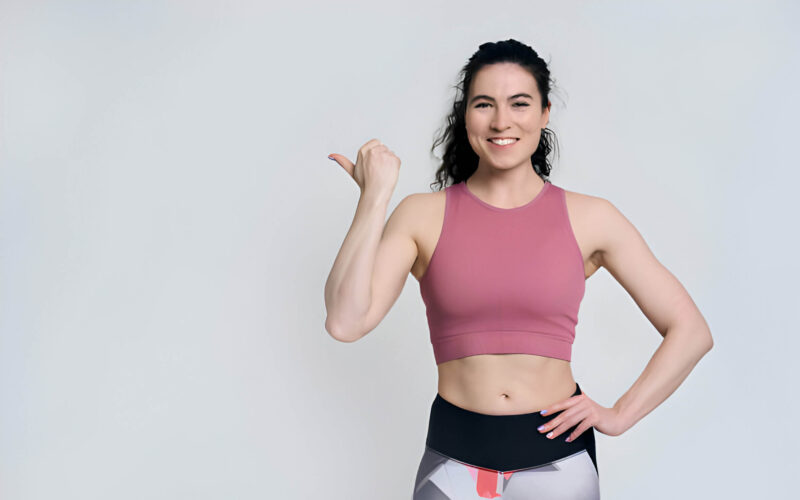Supporting a balanced diet and healthy eating can be challenging, especially when it comes to snacking. However, with these carefully selected low-carb snacks, you can indulge in guilt-free treats that satisfy your cravings and align with your weight loss goals. Whether you’re following a low-carb diet or simply looking for nutritious options, our list will provide enticing choices that are both encouraging and beneficial for your overall well-being. So let’s dive right in and discover these mouthwatering snacks that can help you achieve your weight loss aspirations without compromising taste and enjoyment.
The advantages of a low-carb diet for weight loss
The purpose of a low-carb diet is to induce the body to utilize stored fat as an energy source, resulting in weight reduction.
This dietary approach focuses on reducing the intake of carbohydrates while increasing the consumption of proteins and fats. While there are various reasons why a low-carb diet is beneficial for weight loss. Some of the key advantages are below.
- can help control hunger and reduce overall calorie intake
- can significantly impact weight loss by targeting stubborn belly fat
- can help stabilize blood sugar levels and improve insulin sensitivity
- can also lead to a decrease in water weight
Criteria for selecting low-carb snack ideas
When selecting low-carb snacks, there are several important criteria to consider. These criteria will ensure that you are making a healthy and satisfying choice that aligns with your low-carb diet goals. Here are some criteria for selecting low-carb snacks:
- Carb content: A low-carb snack should have 15 grams of carbs or less per serving.
- Protein content: A low-carb snack should also have some protein, as this can help you feel full and satisfied.
- Fiber Content: Fiber can help slow down the absorption of carbs into your bloodstream, which can help you maintain stable blood sugar levels.
- Healthy fats: Healthy fats can help keep you feeling full and satisfied. They can also provide your body with essential nutrients.
- Taste: Of course, your snack should also taste good! Choose snacks that you enjoy and will help you stay on track with your low-carb diet.
Here are some specific examples of low-carb snacks that meet these criteria:
- Hard-boiled eggs
- Greek yogurt with berries
- Nuts and seeds
- String cheese
- Celery with peanut butter
- Avocado
- Air-popped popcorn
- Cottage cheese with salsa
These are just a few ideas to get you started. There are many other delicious and satisfying low-carb snacks out there. With a little planning, you can easily find snacks that fit your dietary needs and preferences.
Here are some additional tips for selecting low-carb snacks:
- Read the labels: When you’re shopping for low-carb snacks, be sure to read the labels carefully. Some snacks that may seem low-carb on the surface can actually be high in carbs if you’re not careful.
- Be mindful of portion sizes: Even low-carb snacks can be high in calories if you eat too much of them. Be sure to pay attention to portion sizes and only eat what you need.
- Get creative: There are many ways to make low-carb snacks more interesting. For example, you can add protein powder to Greek yogurt or top celery with nut butter and shredded cheese.
The Top 5 Low-Carb Snacks for Weight Loss
The following low-carb snack ideas can also be incorporated into your ketogenic diet.
#1 Hard-Boiled Eggs
Nutritional value:
Eggs are low in calories. They are also an excellent source of protein, healthy fats, and various vitamins and minerals. They promote feelings of fullness and can help curb cravings.
Serving Suggestions:
Prepare a batch of hard-boiled eggs in advance for a quick and portable snack. Sprinkle some salt and pepper or pair them with a side of sliced veggies for extra flavor and nutrition.
Consuming eggs as part of breakfast can be particularly beneficial for weight loss. Nevertheless, individuals at risk of heart disease are advised to limit their cholesterol intake by opting for one or two egg whites per day rather than whole eggs. It is also important to refrain from adding animal fats like butter or bacon grease into egg-based meals.
#2 Avocado with Cottage Cheese
Nutritional value:
Avocados are known for their richness in healthy fats, specifically monounsaturated fats, which have been linked to improved heart health and reduced inflammation. They are also a good source of vitamins, minerals, and dietary fiber. Avocados contain essential nutrients such as potassium, vitamin K, vitamin E, vitamin C, and B vitamins. Additionally, they are low in carbohydrates and contain no cholesterol.
Cottage cheese, on the other hand, is a great protein source, making this an excellent option for people looking to increase their protein intake. It is also rich in calcium, phosphorus, selenium, and B vitamins. Cottage cheese is low in carbohydrates and fats but provides a feeling of satiety due to its high protein content.
How to combine the two ingredients for a tasty snack?
One simple yet satisfying option is to slice an avocado and spread cottage cheese on top. This combination provides a creamy and tangy flavor profile, with the avocado adding a buttery texture and the cottage cheese providing a protein boost.
Another tasty option is blending avocado and cottage cheese to create a creamy dip or spread. This can be seasoned with herbs, spices, or even a squeeze of lemon juice to enhance the flavor. This dip can be enjoyed with whole-grain crackers, sliced vegetables, or as a spread on whole-grain bread.
Serving suggestions:
Half of the avocado with 1/4 cup or 3 – 4 tablespoons of Cottage Cheese
Variations:
- Avocado-Cottage Cheese Dip with Veggie Sticks
Mash half of the avocado with 1/2 cup of cottage cheese to create a creamy dip. Pair it with crunchy vegetable sticks like carrot, celery, and bell pepper for added fiber and vitamins. This snack is not only low in calories but also packed with nutrients that can promote a feeling of fullness.
- Avocado-Cottage Cheese Toast
Spread a tablespoon of cottage cheese on a slice of whole-grain bread, top it with thin avocado slices, or add a sprinkle of herbs or spices for extra flavor.
- Avocado-Stuffed Cottage Cheese Capsicums
Cut the bell pepper lengthwise, remove the seeds, and fill each half with a mixture of cottage cheese and mashed avocado. Bake them in the oven until the pepper is tender. This snack is not only visually appealing but also a great source of vitamins, minerals, and fiber.
Satisfaction and health benefits of this snack
This combination offers a well-rounded option. The healthy fats from avocados, combined with the protein from cottage cheese, help to create a feeling of fullness and reduce cravings. The fiber content in avocados aids in digestion and promotes a healthy gut.
During weight loss, the protein in cottage cheese assists in preserving lean muscle mass, which is essential for maintaining a healthy metabolism.
#3 Greek Yogurt with Berries
Nutritional value
Greek yogurt, known for its thick and creamy texture, is a high-protein food, low in calories and carbohydrates, making it a suitable choice for those following a low-calorie or low-carb diet. Protein is crucial for building and repairing tissues and helps keep you feeling full for longer periods of time. This can prevent overeating and unnecessary snacking throughout the day.
Greek yogurt is also rich in probiotics, beneficial bacteria that support healthy digestion. A healthy gut is essential for optimal weight management, as it aids in absorbing nutrients and helps regulate appetite and metabolism.
On the other hand, berries are packed with antioxidants, fiber, and vitamins, making them an excellent addition to any weight loss diet.
One notable benefit of berries for weight loss is their ability to reduce inflammation in the body. Chronic inflammation has been associated with weight gain and obesity, so by consuming berries regularly, you can help to combat and reduce this inflammation.
Combinations and variations
- Greek yogurt parfait
Layer Greek yogurt with a variety of berries and a sprinkle of granola for a delicious and satisfying breakfast or snack option.
- Berry smoothie
Blend Greek yogurt, a handful of berries, and a splash of almond milk for a refreshing and nutritious smoothie to help curb cravings.
- Greek yogurt bowl
Top a bowl of Greek yogurt with a fresh mix of berries, nuts, and a drizzle of honey for a nutrient-dense and filling meal.
Emphasizing the taste and satiety factor of this snack,
Berries are low in calories and high in water content. They help promote feelings of fullness and reduce calorie intake. The fiber content in berries can assist digestion and help regulate blood sugar levels, which is crucial for maintaining a steady energy supply and preventing overeating.
The satiety of Greek yogurt is not well-established or widely recognized. However, Greek yogurt, like other high-protein foods, is known to be more satiating than low-protein options. The increased protein content in Greek yogurt can help you feel fuller for longer and potentially reduce your overall calorie intake.
Tip
If you only have frozen berries, thaw them before adding them to Greek yogurt to help these fruits release their juices and create a more flavorful snack or dessert.
#4 Celery Sticks with Peanut Butter
Nutritional value and satiety factor
When combined, the fiber in celery helps with digestion and keeps you full, while the healthy fats and protein in peanut butter provide energy and satiety.
Celery sticks are low in calories and high in fiber. They are composed mostly of water, which makes them a low-calorie food. Consuming low-calorie foods like celery can be beneficial for weight loss as they provide a feeling of fullness without adding too many calories. The high fiber content in celery helps promote digestion and keeps you satisfied for longer periods, reducing the likelihood of overeating.
Peanut butter is a protein-packed spread. Protein takes longer to digest, keeping you fuller for longer and helping to maintain lean muscle mass, which is essential for a healthy metabolism. Nevertheless, peanuts are calorie-dense, and although they contain beneficial fats, excessive consumption can have negative consequences. So, it is advisable to regulate your peanut consumption to prevent undesired weight gain or health issues resulting from excessive fat intake. Stick to a tablespoon or two of peanut butter to keep the calorie content in check.
Portion control and mindful eating tips
- Measure your peanut butter
Since peanut butter is calorie-dense, it’s important to be mindful of the amount you use. A standard serving of peanut butter is about 2 tablespoons, which equates to roughly 180-200 calories. Use a measuring spoon to ensure you’re not going overboard with the peanut butter.
- Opt for natural peanut butter
Natural peanut butter is a healthier choice as it contains fewer added sugars and preservatives than conventional brands. Look for peanut butter with only peanuts and salt listed in the ingredients. Avoid those with added sugars or hydrogenated oils.
- Choose celery sticks wisely
When selecting celery, opt for fresh, crisp ones. The crunchier the celery, the more satisfying it will be to eat. Also, make sure to wash them thoroughly to remove any traces of dirt or pesticides.
Mindful eating involves paying attention to the taste, texture, and sensation of each bite. Instead of mindlessly devouring your celery sticks with peanut butter, take the time to savor the flavors. Chew slowly and enjoy the crunch of the celery and the creaminess of the peanut butter.
#5 Veggie Sticks with Hummus
Nutritional value
Veggie sticks with hummus are a low-calorie and high-fiber snack. This creates a calorie deficit, which means consuming fewer calories than you burn. Veggie sticks are typically made from various vegetables.
For example, carrots are a great source of vitamin A and potassium. These nutrients are vital for maintaining overall health and supporting weight loss.
Hummus, on the other hand, is a dip made from chickpeas, tahini (ground sesame seeds), olive oil, lemon juice, garlic, and various spices.
Recommend vegetable options
Celery is another veggie that pairs well with hummus. It is high in water content and low in calories, making it a great choice for weight loss. Additionally, celery is rich in antioxidants and can aid in digestion.
Cucumbers are refreshing and hydrating, making them a perfect match for hummus. They are low in calories and high in water content, which can help with satiety and hydration.
Bell peppers come in various colors and are packed with vitamins A and C. They add a satisfying crunch to your hummus dip and contribute to a well-balanced diet.
Radishes are a slightly spicy and crunchy option that adds a unique flavor to your hummus. They are high in fiber and low in calories, which makes them a great choice for weight loss.
Broccoli is a low-calorie, nutrient-rich vegetable. When you combine broccoli and hummus, you get a snack or meal that is high in fiber, low in calories and has a good amount of protein. When paired with hummus, broccoli adds a satisfying crunch and a fresh, slightly bitter taste that complements the creamy and savory flavor of the hummus. This combination can help you feel full and satisfied, leading to weight loss.
Cauliflower is another low-calorie vegetable that is high in fiber. This is a versatile vegetable that can be enjoyed in various ways, such as raw, steamed, roasted, or even mashed. Its mild flavor complements the taste of hummus well. Depending on how it’s prepared, it provides a crunchy or creamy texture.
Green beans are loaded with critical vitamins and minerals, including vitamin C, vitamin K, and folate. When combined with hummus, which is also nutrient-rich due to its chickpea base, you get a wholesome and satisfying snack that provides essential nutrients while being relatively low in calories.
Snap peas are a crunchy and sweet vegetable that is perfect for dipping. Snap peas are packed with essential vitamins and minerals, including vitamin C, vitamin K, folate, and manganese. The satisfying crunch and texture of snap peas make them an excellent dipper for hummus.
The act of chewing can promote satiety and provide a sense of satisfaction during your meal or snack. This can help you feel more content and less likely to overeat.
You can also try these with your hummus:
Zucchini
Cherry tomatoes
Asparagus
Mushrooms
Edamame
Fennel
Pickles
Additional low-carb snack options
- Eggs and turkey sausage: Eggs are a good protein source, helping you feel full and satisfied. Turkey sausage is a lean protein that is also low in calories.
- Caprese salad: Caprese salad is made with fresh mozzarella cheese, tomatoes, and basil. These ingredients are all low in calories and fat and are also a good source of vitamins and minerals. Caprese salad is a light, refreshing snack that can help you feel full between meals.
- Olive tapenade: Olive tapenade is a spread made from olives, capers, anchovies, and olive oil. It is a high-fat snack, but the fat in olive tapenade is healthy. This is why olive tapenade can be a satisfying snack that can help you feel full between meals.
- Seaweed: Seaweed is a low-calorie, high-fiber snack that is also a good source of vitamins and minerals. It is a good option for people looking for a healthy and satisfying snack to help them stay full between meals.
- Jerky: Jerky is a high-protein, low-fat snack that can be a good option for people looking for a healthy snack that will help them feel full between meals. However, choosing jerky that is low in sodium and sugar is important.
Precautions and considerations when following a low-carb diet
- Talk to your doctor before starting a low-carb diet. This is especially important if you have any health conditions.
- Make sure you get enough protein. When following a low-carb diet, you may need to increase your protein consumption to prevent muscle loss.
- Get enough fiber. Fiber can help you feel full and satisfied, and it’s also important for gut health.
- Watch your electrolytes. When you’re following a low-carb diet, you may lose more electrolytes through urine. This leads to symptoms such as fatigue, headaches, and muscle cramps. Ensure to drink plenty of fluids and eat foods high in electrolytes, such as leafy green vegetables, nuts, and seeds.
- Be aware of the potential side effects. Some people experience side effects when starting a low-carb diet, such as fatigue, nausea, and constipation. These side effects usually go away after a few weeks. However, if you experience any severe side effects, such as difficulty breathing or chest pain, stop the diet and see a doctor immediately.
- Monitor your body’s response. Everyone’s body is unique, so paying attention to how your body responds to a low-carb diet is important. Some people may thrive on a low-carb eating plan, while others may not feel as good. If you experience any adverse effects or feel unwell, it may be necessary to adjust your carbohydrate intake or consider other dietary approaches.
Conclusion
Discovering the perfect low-carb snacks for weight loss can be a game-changer on your journey to a healthier lifestyle. By incorporating these delicious and satisfying options into your daily routine, you can take significant steps towards achieving your weight loss goals.
The top 5 low-carb snacks we have explored provide a variety of choices that keep your cravings at bay and support your body’s nutritional needs. From crunchy vegetables with a flavorful dip to protein-packed treats and smart alternatives to traditional favorites, these snacks offer a winning combination of taste and health benefits.
Remember, embarking on a weight loss journey is a personal and transformative experience. It requires commitment, dedication, and a positive mindset. With these low-carb snacks by your side, you can enjoy guilt-free indulgence while progressing towards your weight loss goals.



